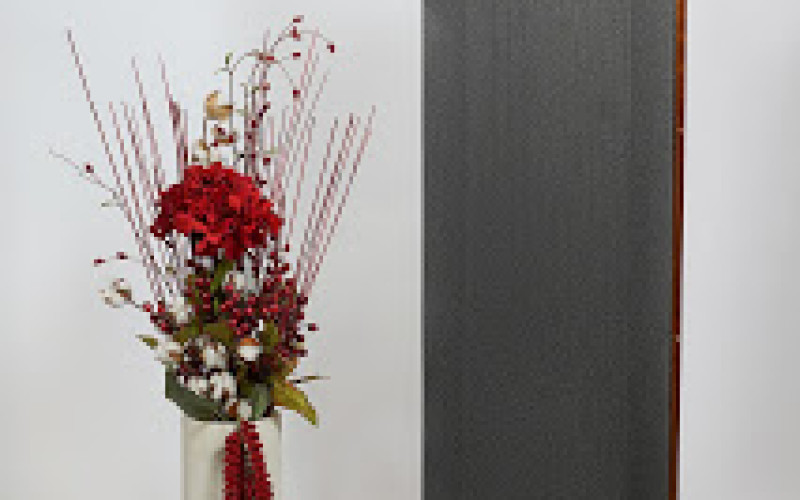Big on performance, smaller on space: the new Magneplanar 0.7
What do you do if you covet Magnepan’s soaring loudspeakers but don’t have the largest of listening rooms? “We hear you”, said Magnepan. Enter the new 0.7 (‘point seven’), a scaled down version of the brand’s acclaimed 1.7 model. To say that Magnepan’s Magneplanar 1.7 flat-panel loudspeaker is highly regarded in its native USA would be something of an understatement. Hailed by the audiophile press as a landmark design, its initial launch was one of the most hotly anticipated at the 2010 Consumer Electronics Show. „Not just the Affordable Loudspeaker of the Year, the 1.7 is the affordable loudspeaker of the decade”, said The Absolute Sound on bestowing its coveted award, while over on CNET, US reviewer Steve Guttenberg described the 1.7 as “one of the greatest speakers of our new century”.
Now Magnepan have introduced the new 0.7 (‘point seven’), a scaled down version of the ever-popular 1.7, designed with the smaller listening room in mind.
A landmark design
Standing apart from the crowd, Magnepan’s loudspeakers (‘Maggies’ to their many fans) are tall, slender flat-panel designs which, unlike most standard cabinet speakers, do not rely on conventional cone and dome drivers. The Magneplanar concept is similar to an electrostatic speaker in that both produce sound by moving a thin film membrane. But in the Magneplanar design, the force is magnetic rather than electrostatic, generated by an array of closely spaced permanent magnets.
The 1.7’s technology was unprecedented for Magnepan, being the company’s first „full range quasi ribbon” design. Ribbon-based drivers are an evolution of Magnepan’s original planar magnetic technology. An ultra-thin ribbon of metallic foil carries the current from the amplifier, and is also the diaphragm that moves the air to create sound. No voice coil, no cone, no surround, no box. Nothing except the ribbon, which sets a standard in high frequency sound reproduction with its ability to reproduce a level of fine detail that would typically be masked by other systems. So what exactly is a „full range quasi ribbon” design? The quasi ribbon driver is a deviation from the true ribbon design in which a very thin film backing is used to hold the delicate ribbons in place. One of the advantages of quasi ribbon drivers is their extremely wide frequency bandwidth and high power handling, enabling their use through the full range of drivers. The result? Superb integration and coherence, with the bass, mid and high frequencies all blending together to produce sound from one seamless ‘sheet’.
High performance in smaller spaces
Like the 1.7, the new scaled down 0.7 is a full range quasi ribbon design, Americanmade with virtually all American-made parts. The key differences lie in its slightly smaller dimensions and the fact that it is a two-way rather a three-way design. Because the 0.7 has a smaller bass diaphragm, it has less ‘bite on the air’ so the bass will be less than that of the 1.7 if it is used it in a larger room. However, Magnepan has this covered: their optional add-on Magneplanar Bass Panel offers the flexibility to add bass diaphragm area to fit the needs of any room.
For those who have followed Magnepan’s recent ‘i’ upgrades to the 3.7 and 1.7 models, the enhancements applied in the 3.7i and 1.7i have been incorporated into the 0.7.
Technical specifications
Type 2-way full range quasi ribbon loudspeaker
Frequency response 45 – 22 kHz ±3 dB
Impedance 4Ω
Sensitivity 86 dB / 2.83 V @ 500 Hz
Dimensions (w x h x d) 387 x 1378 x 32 mm
Pricing & availability
The Magneplanar 0.7 is available now in a choice of two finishes: off-white fabric with an oak trim, or black fabric with an oak, cherry, black or silver trim.
UK selling price (per pair, including VAT @ 20%):
• Magneplanar 0.7 £1,690
• Magneplanar DWM Bass Panel (optional, for larger rooms) £ 990
• Optional plinth / stand On request
About Magnepan
Magnepan has been manufacturing innovative, world class stereo speakers for more than 40 years. Creator Jim Winey first owned electrostatic loudspeakers and began experimenting to develop an improved model. In 1969 he invented the Magneplanar, a thin-film magnetic equivalent to the electrostatic, and founded Magnepan. Magneplanars are American-made with virtually all American parts. The brand’s corporate and manufacturing facilities are located in White Bear Lake, Minnesota, a small community north of the twin cities of St. Paul and Minneapolis. Having outgrown its original facilities, Magnepan’s current plant covers over 50,000 square feet in addition to corporate and engineering offices. To date, more than 200,000 pairs of Magneplanar loudspeakers have found their way into the homes of music lovers worldwide.




